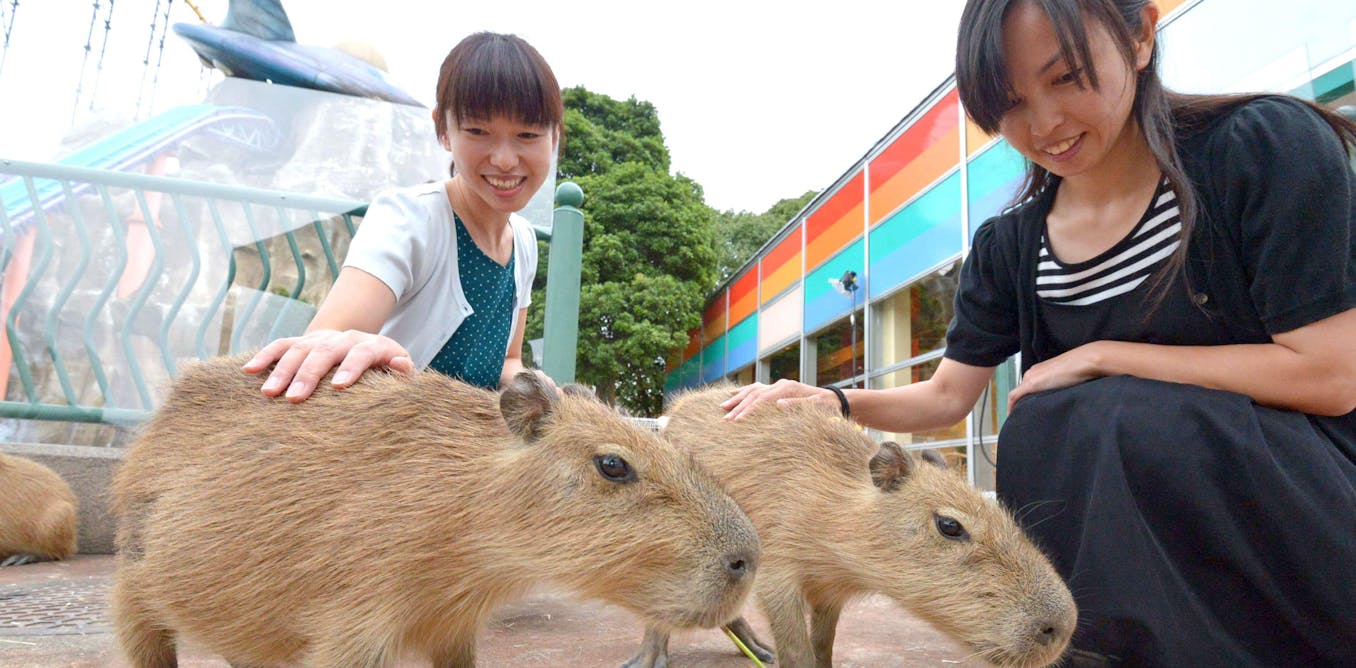A lot of dog owners believe that they can tell what their dogs are feeling. They believe that they can assess their dog’s emotions no matter the context.
Yet newspapers frequently publish stories about dogs who attack “out of nowhere”, where owners claim there were “no signs” prior to the attack. A recent US study has found the answer may lie with humans – as it turns out, we’re not very good at interpreting dogs’ emotions.
Previous research has shown that experience with dogs affects how successful people are in assessing a dog’s emotional state. As a psychologist, the more I know about dogs and the more I study and observe them, the better I become in assessing their behaviour. However, even experts can struggle to get it right.
In the recent US study, researchers looked at how successful people are at assessing dogs’ emotions from looking at pictures. The images showed the dogs in different postures such as submissive or anxious. Sometimes the context around the dog was positive (for example, the owner approaching the dog with a lead) and sometimes the context around was negative (a person about to scold the dog).
The study found that the context influenced whether people assessed the dog’s behavioural response as positive or negative even though the posture and other signals didn’t change.
Research also suggests we have the tendency to misinterpret some facial expressions of dogs. A 2018 University of Lincoln study examined how children aged three to five years old and their parents interpret dogs’ facial expressions.
Participants were shown pictures of dogs, for example showing bare teeth, which signals high levels of distress. The children especially misinterpreted that as a smiling and happy dog. The study also showed that interventions, which educated participants on how to interpret dogs’ behavioural signals, increased their understanding of dogs’ stress signals (though this was mostly true in the adults).
We tend to anthropomorphise and attribute human emotions to our dogs. A good example of this is the so-called guilty look. You often see videos on social media in which a dog avoids eye contact with humans, for example turning its head slightly to the side.
If this happens after the dog has done something they shouldn’t have, the owner may classify this as indicative of shame or guilt. In reality, dogs avoid eye contact as a kind of deescalation behaviour.
It indicates that they do not want a confrontation. Perhaps the owner has already reacted to the mishap. Or the dog has learned to expect a reaction from the owner in certain situations. Insecure or fearful dogs also often avoid eye contact because they feel threatened or intimidated. However, this behaviour has little to do with shame.
Another classic misconception is that a dog that wags its tail is a happy and friendly dog. In reality, a wagging tail only means that the dog is aroused. To assess the dog’s emotional state, you also have to consider the position of the tail. If it is standing upright, then this is more a sign of a tense dog. If it is positioned lower and the movement of the tail is relaxed and wide from left to right, then it is probably a friendly signal.
We anthropomorphise dogs because we have evolved a human-specific way to interpret others’ emotions. If we see a person who pulls up the corners of their mouth and smiles, then we understand them to be happy or at least cheerful. That leads to problems if we apply that system to interpret other species’ emotional expressions.
So how can we analyse dogs’ emotional expression in an objective way? One approach that scientists use is a technical method called DogFACS. In this method, each facial muscle is assigned a movement on the surface of the face. Facial movements are documented by numbers and analysed separately from each other.
In 2013 University of Portsmouth researchers went to dog shelters across the UK and filmed dogs for two minutes each. They then analysed the dogs’ behaviour, including their facial expressions.
The animal shelter told the researchers how long it took for the filmed dogs to be adopted by new owners. Neither barking nor wagging tails influenced the adoption rate, but only a specific eyebrow movement: the so-called puppy dog eyes look. The more often the dogs raised their eyebrows and produced the puppy dog eyes, the quicker they were rehomed. Nothing else had an effect. This could be because the puppy dog eyes resemble a facial movement that we produce when we are sad and makes us want to care for the dog.
SakSa/Shutterstock
In fact my 2019 study showed that the facial muscle anatomy of dogs has evolved for facial communication with humans. My team compared the facial muscle anatomy of dogs and wolves and demonstrated that the facial muscles of dogs and wolves are identical – except for one muscle, the levator anguli oculi medialis. This muscle is responsible for the lifting of the inner eyebrow in dogs.
We may not be much good at reading dogs’ emotions but as the University of Lincoln study shows, we can learn to be.

The post “Humans are bad at reading dogs’ emotions – but we can learn to do better” by Juliane Kaminski, Associate professor of comparative Psychology, University of Portsmouth was published on 03/26/2025 by theconversation.com




































Leave a Reply